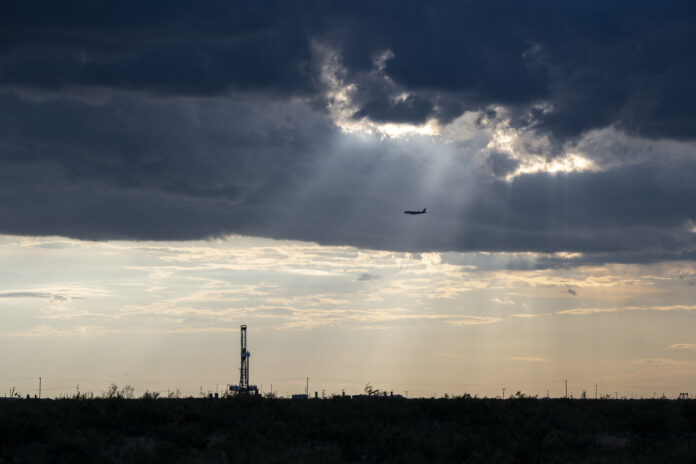
MIDLAND Having drilled a record 98 wells in the second quarter, Diamondback Energy will slow down a little in the second half of 2023 and consolidate its gains.
That’s according to Chairman-CEO Travis Stice, who said in Diamondback’s second quarter earnings call Tuesday that that pace of nearly 400 wells per year would exceed the original plan of 340.
“So a lot of pipes in the ground and 1.1 million lateral feet drilled,” Stice said. “It was a good quarter of operations, which is why we’re slowing down the drilling pace in the second half of the year and building a few ducts.
“Then on the midstream side we have a lot of infrastructure in the Midland Basin that does have extra capacity. And if a neighbor needs water or needs to dispose of water and we have that capacity, we will spend a few dollars to connect to that person.”
Stice said unique opportunities have arisen in Martin County during the past three or four months and Diamondback “will spend some dollars to go get a lot of barrels and that’s a high payback, high return midstream spend.
“Just to add to that with this profitability model that we’ve been demonstrating now for multiple quarters in a row, I hope we have been able to show that volume growth is an output of efficient capital allocation that’s laser-like focused on profitability,” he said.
“Here on Aug. 1 as we’re entertaining questions on 2024, the volume growth will be an output of efficient capital allocation that maximizes the value for our capital allocation decisions.”
Stice said there is not one individual piece of technology that’s transferable across the company’s entire rig fleet.
“It’s much more subtle than that,” he said. “We get this question a lot and it’s always phrased in different ways about why does Diamondback do what they do. But the answer remains unchanged. It’s the culture we have that has an extreme focus on cost control and efficiencies.”
Stice said third quarter production may be up some from the second quarter, but it will still be rather flat.
“We think about the oil guidance as what drives the decisions here at the company,” he said. “If this were 2017 or 2018 we’d be stepping on the accelerator and spending more capital, but instead we’re focused on generating more free cash flow in the second half of the year and returning that cash to the shareholders.”
President-CFO Kaes Van’t Hof said Diamondback “in this new business model of capital efficiency and profitable value over volumes is focused on running the most efficient plan possible, which would be that four simulfrac crew.
“Absent every major change in commodity price the plan is the plan and that allows the teams to plan their business and lets us execute at the lowest cost from a capital and exploration expenditures perspective,” he said. “So 15-ish rigs and four simulfrac crews feel like a really good baseline for us.”
Van’t Hof said very deep drilling is risky.
“With the way our acreage sits today that 10,000 to 11,000 range feels about right on average,” he said. “We’d rather drill a 15,000 footer than two 7,500 footers, but I think today we’d rather drill two 10,000 footers versus one 20,000 footer.
“There’s no doubt it’s a risk-reward decision because if something bad happens at 18,000 feet, that’s an expensive mistake. So we’d rather continue to get wells down at 10,000 feet in eight, nine days consistently versus risking a 30-40-day well.”



